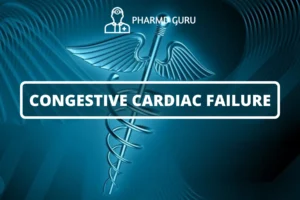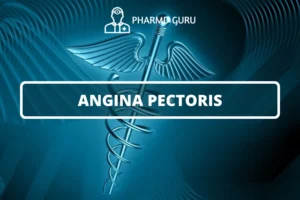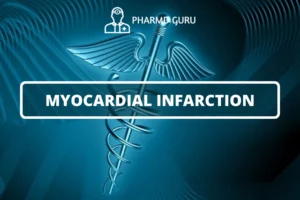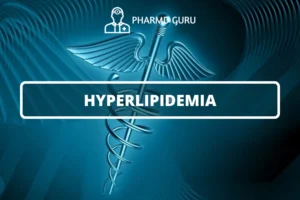Hypertension, commonly known as high blood pressure, is a chronic medical condition that affects a significant portion of the global population. It is characterized by persistently elevated blood pressure levels, which can lead to various cardiovascular complications if left untreated. In this article, we will delve into the etiopathogenesis of hypertension and explore the pharmacotherapy options available for its management.
SCROLL DOWN TO THE BOTTOM OF THIS PAGE FOR ACTUAL NOTES.
Table of Contents
- Introduction: Understanding Hypertension
- Etiology and Risk Factors
- Pathophysiology of Hypertension
- Diagnostic Evaluation
- Non-pharmacological Interventions
- Antihypertensive Medications
- First-Line Pharmacotherapy Options
- Second-Line Pharmacotherapy Options
- Combination Therapy
- Personalized Treatment Approach
- Treatment Guidelines and Recommendations
- Adherence and Lifestyle Modifications
- Monitoring and Follow-Up
- Potential Complications
1. Introduction: Understanding Hypertension
Hypertension is a widespread health issue that occurs when the force of blood against the walls of arteries is consistently too high. It is often referred to as the “silent killer” because it often presents with no obvious symptoms. If left uncontrolled, hypertension can increase the risk of heart disease, stroke, kidney problems, and other serious health conditions.
2. Etiology and Risk Factors
Hypertension has multifactorial etiology, meaning it is influenced by a combination of genetic and environmental factors. Some common risk factors for developing hypertension include:
- Family history of hypertension
- Age (risk increases with age)
- Obesity and overweight
- Sedentary lifestyle
- High-sodium diet
- Excessive alcohol consumption
- Smoking
- Stress and mental health issues
Understanding the risk factors is crucial in both preventing and managing hypertension effectively.
3. Pathophysiology of Hypertension
The pathophysiology of hypertension involves complex mechanisms that affect the regulation of blood pressure. It often involves abnormalities in the functioning of the renin-angiotensin-aldosterone system (RAAS), endothelial dysfunction, increased sympathetic nervous system activity, and vascular remodeling. These mechanisms can lead to increased peripheral resistance and/or excessive fluid volume, resulting in elevated blood pressure levels.
4. Diagnostic Evaluation
Accurate diagnosis of hypertension is essential to initiate appropriate treatment. Diagnostic evaluation typically includes:
- Blood pressure measurement
- Assessing for signs of end-organ damage
- Evaluating for secondary causes of hypertension
- Laboratory tests to assess renal function, electrolyte levels, and lipid profile
A comprehensive evaluation helps in identifying the underlying cause of hypertension and guides treatment decisions.
5. Non-pharmacological Interventions
Lifestyle modifications play a crucial role in the management of hypertension. Some non-pharmacological interventions include:
- Dietary changes: Reducing sodium intake, adopting the DASH (Dietary Approaches to Stop Hypertension) diet, consuming more fruits and vegetables, and limiting alcohol intake.
- Regular physical activity: Engaging in aerobic exercises, such as brisk walking, jogging, or cycling, for at least 150 minutes per week.
- Weight management: Achieving and maintaining a healthy weight through a balanced diet and regular exercise.
- Stress reduction: Utilizing stress management techniques, such as meditation, yoga, or deep breathing exercises.
- Smoking cessation: Quitting smoking to reduce the risk of cardiovascular complications.
These lifestyle modifications can have a significant impact on blood pressure control.
6. Antihypertensive Medications
When lifestyle modifications alone are insufficient to control blood pressure, pharmacotherapy becomes necessary. Various classes of antihypertensive medications are available, each targeting different mechanisms to lower blood pressure.
7. First-Line Pharmacotherapy Options
The first-line pharmacotherapy options for hypertension include:
- Angiotensin-Converting Enzyme (ACE) Inhibitors
- Angiotensin II Receptor Blockers (ARBs)
- Calcium Channel Blockers (CCBs)
- Thiazide Diuretics
These medications are effective and well-tolerated, making them suitable choices for most patients with hypertension.
8. Second-Line Pharmacotherapy Options
If blood pressure remains uncontrolled despite first-line therapy or if specific clinical indications are present, second-line pharmacotherapy options may be considered. Some examples include:
- Beta-Blockers
- Alpha-Blockers
- Loop Diuretics
- Potassium-Sparing Diuretics
The selection of second-line medications depends on individual patient characteristics and comorbidities.
9. Combination Therapy
Combination therapy involving two or more antihypertensive medications is often required for patients with severe hypertension or those who do not achieve blood pressure goals with monotherapy. Combining medications with complementary mechanisms of action can enhance their effectiveness in controlling blood pressure.
10. Personalized Treatment Approach
Hypertension management should be individualized based on patient characteristics, including age, comorbidities, and medication tolerability. A personalized treatment approach ensures optimal blood pressure control while considering potential side effects and drug interactions.
11. Treatment Guidelines and Recommendations
Several organizations, such as the American Heart Association (AHA) and the European Society of Cardiology (ESC), have developed guidelines and recommendations for the management of hypertension. These guidelines provide evidence-based recommendations on diagnosis, treatment thresholds, and treatment goals.
12. Adherence and Lifestyle Modifications
Long-term adherence to treatment and lifestyle modifications is crucial in maintaining blood pressure control and preventing complications. Healthcare providers play a vital role in educating patients about the importance of adherence and providing ongoing support.
13. Monitoring and Follow-Up
Regular monitoring of blood pressure and follow-up visits with healthcare providers are necessary to assess treatment efficacy and make adjustments as needed. Monitoring also allows for early detection of any potential complications.
14. Potential Complications
Uncontrolled hypertension can lead to various complications, including:
- Cardiovascular diseases (e.g., heart attack, stroke, heart failure)
- Kidney damage
- Eye damage
- Peripheral artery disease
Early diagnosis and effective management are key to minimizing the risk of these complications.
ACTUAL NOTES:




